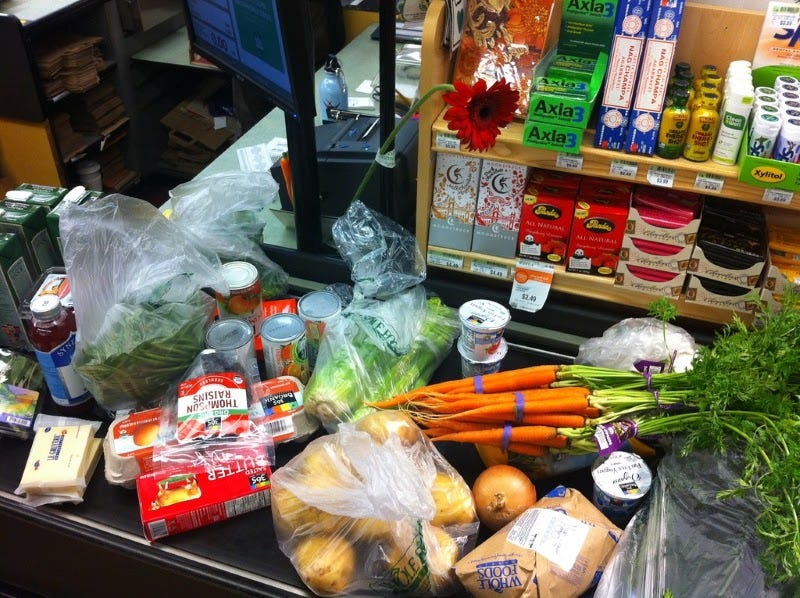The U.S. government is lying about inflation
Funny formulas hide soaring costs for working families
Thank you for reading Contention! Get ready for four or five minutes of hedonically adjusted dissident business news.
If you believe what the government tells you, consumers have good cause for optimism right now. The consumer price index (CPI) -- the official measure of cost inflation for the U.S. public -- came in right at expectations yesterday, a modest 0.4% for the month and just 1.7% year-over-year.
That’s still the fastest gain in six months, but “core” CPI -- which excludes fuel and food purchases -- was only up 0.1% for the month or 1.3% year-over-year, down from January. Markets liked the good news, as interest rates stalled their recent climb and tech stocks gained in response.
Talk to any working family paying for housing, groceries, health care, education, and transportation, however, and these numbers might as well come from a different universe. Contention exists to follow the money through the unfolding crisis of our way of life, and understanding how the government lies about inflation, what is really happening to costs right now, and what it means for our society and its future is an important part of that mission.
First, how could the numbers be so wrong? Most people understand the CPI to be the same sort of tool economists have always used to measure purchasing power: the average cost of a steady basket of goods and services, weighted for their significance to household budgets. Tracking the CPI over time should reflect the rising (or falling) costs of maintaining a steady quality of life.
But the U.S. government uses the CPI to adjust payments for Social Security and other benefit programs, so in the 1980s and 1990s politicians changed its formulation to suppress the official rate of inflation:
It allowed for more regular substitution of goods -- the famous example being that as steak gets too expensive families switch to hamburger, so the CPI basket should change to the lower cost item too.
“Hedonic quality adjustments” deflated prices in response to alleged quality improvements in goods. Textbooks got more expensive, for example, but the CPI says they got cheaper because they went from black-and-white to color pictures.
In total, the CPI shifted from measuring a concrete standard of living to an abstract notion of “utility.” Not only has this meant eroding benefits for retirees and disabled people, it means that decades of stagnant wages for workers have not been stagnant at all -- they’ve been years of plummeting real wages and quality of life for most families.
Also remember that interest rates reflect inflation: under normal conditions no one would buy a bond that they expect will be less valuable when it comes due. The more they expect inflation to rise, the more interest the market will demand. But if official inflation numbers hide real cost growth, bonds will be overpriced -- price moves opposite to yield. Investors will put their money into riskier “better deals” like stocks.
Increased cash flow to capital, falling wages for labor -- this is how you get 21 years of declining labor force participation. You would expect declining demand for any asset with declining returns, including wages.
And all of the data suggests that things are especially bad right now. Even with its funny numbers, CPI food prices were up 3.6% year-over-year. Worldwide things are even worse -- food costs have increased 50% since last summer, driven by trade breakdowns and financial speculation.
The CPI also hides housing expenses by concocting an “Owner-Equivalent Rent” (OER) figure as its largest single component, supposedly translating housing capital costs to a consumer cost. According to the OER, housing prices are only up 2% over the last year, while the Case-Shiller Housing Index -- which the CPI used to track -- is up 10.3%, the most ever. The CPI actually says that housing inflation is at a 10-year low.
Businesses are seeing increased input costs too, with the National Federation of Independent Business (NFIB) survey of small businesses reporting the highest level of its members raising prices since 2008. Commodities have surged in price, a new commodity “supercycle” driving up consumer prices as businesses increasingly pass on their costs.
This is happening because COVID has created a “persistent reallocation shock,” a permanent change in production and demand that will likely take years to work out. This could mean a “regime shift” from 30 years of low inflation to ever-accelerating costs.
The people who will feel it the most will be those with the least breathing room on their balance sheets -- working people and the smallest businesses -- while large businesses might actually improve their profit positions by sneaking in ever-higher charges. Underpriced risk will keep blowing up bubbles, and bailouts will mean zero consequences except for retirees and laid-off employees.
And all the while those who say they are elected to help will lie about it all, hoping we never catch on.
Disclaimer
Our only investment advice: Appraise.
Contact us with questions, feedback, or stories we might have missed.




